Nose Surgery in Morocco
Search and Compare the Best Clinics and Doctors at the Lowest Prices for Nose Surgery in Morocco

Find the best clinics for Nose Surgery in Morocco
With Medijump you can browse 2 facilities offering Nose Surgery procedures in Morocco. The cheapest price available is $1,815 in Marrakech. And for the cheapest price globally, prices start from $101 in Poland.
Nose Surgery in Marrakech
Price: $ 1,815
Poland offers the best prices Worldwide
Price: $ 101
From 14 verified reviews
Osp Global, 03 December 2019
Excellent service with professionalism .Dr HASSAN EL GBOURI he did for me PRP and hair transplant it’s fantastic thank you Ms said I respect your work
From 23 verified reviews
Zineb Solaihi, 22 November 2019
Clean clinic very lovely staff
- Home
- Morocco
Compare Before & After Photos of _procedure_photos.phpNose Surgery
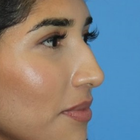
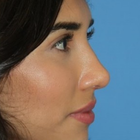
Full-side view
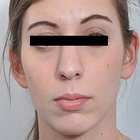

Front view
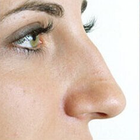
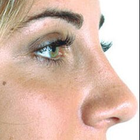
Full-side view
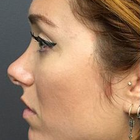
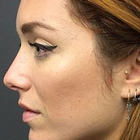
Full-side view
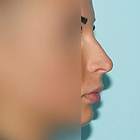
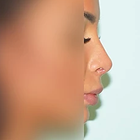
Full-side view

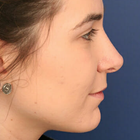
Full-side view
WHY US?
At Medijump, we're making medical easy. You can search, compare, discuss, and book your medical all in one place. We open the door to the best medical providers worldwide, saving you time and energy along the way, and it's all for FREE, no hidden fees, and no price markups guaranteed. So what are you waiting for?

Free

Best Price

Widest Selection

Risk-Free
What you need to know about Nose Surgery in Morocco
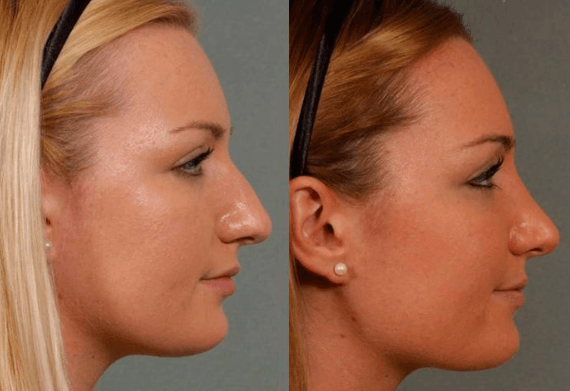
Commonly referred to as a Rhinoplasty, it is the medical term for reshaping of the nose or corrective surgery of the nose. It is one of the most common facial plastic surgeries (Facelift) procedures performed. Nose surgery can be performed to change the consequence of genetics, birth defect or nasal injury. It can be performed to enhance the appearance and/or to improve nasal breathing.
Surgery can be performed to correct nasal humps, the curvature of nose-bridge, nose tip irregularities, and asymmetry in the nostrils. The nasal appearance can be altered in various ways using intra-nasal chisels. Nose surgery procedures generally fall under three types: open rhinoplasty, closed rhinoplasty, and tip rhinoplasty. Rhinoplasty is normally performed under general anesthesia and will not leave any visible scars on the nose.
What does a Nose Surgery Procedure Involve?
Nose surgery is an individualized surgery. Before the surgery, you will need to discuss important factors with your surgeon to determine if it is suitable for you. Your surgeon will review your medical history, including your previous surgeries, medical conditions, and any medications you are taking. You will need to have a complete physical examination, such as blood tests. Your surgeon will also consider your other facial features, the skin on your nose, and what you would like to change or correct. Then, your surgeon will develop a customized plan for you. Two weeks before and after surgery, avoid any medications that contain aspirin or ibuprofen, such as Advil and Motrin IB because these medications can increase bleeding. You will need to also stop taking herbal remedies and over-the-counter supplements. If you are an active smoker, stop smoking because smoking can slow your healing process and increase the risk of getting an infection.
During the actual surgery, you will be given either local anesthesia or general anesthesia. The type of anesthesia depends on how complex the surgery is and what the surgeon would prefer to use. Then, the surgery will start by making incisions inside your nose or at the base of your nose between your nostrils. Your surgeon will reshape the inner bone and cartilage underneath your skin to make a more pleasing appearance.
There are several ways to change the shape of your nasal bones or cartilage, depending on your nose’s structure and how much needs to be removed or added. If only small changes are required, your surgeon may use cartilage taken from deeper inside your nose or your ear. However, for a much larger change, your surgeon may use cartilage from your rib, implants, or bone from other parts of your body. When the changes are finished, your surgeon will place the nose’s skin and tissue back. The incisions will be closed by stitches.
How Long Should I Stay in Morocco for a Nose Surgery Procedure?
If everything goes well, you can go back to your hotel on the same day once the effects of anesthesia wear off. However, you will need to stay in a recovery room for a few hours so the staff can monitor you. Some people may need to stay in hospital overnight. After you are discharged from the hospital, you will need to stay in Morocco for at least 10 to 14 days for initial recovery, follow-up checkups, and for the stitches to be removed.
What's the Recovery Time for Nose Surgery Procedures in Morocco?
The recovery period for nose surgery can be different from person to person. In general, 2 to 3 weeks is needed until you can get back to your full normal routine and 3 to 6 weeks until you can do any strenuous activity. However, you should be able to go back to work within a week, except if your job requires strenuous physical activity. You will feel gradually better each day in the first week. You will experience swelling, which can take six months to subside. The only people who will notice the swelling is you and your surgeon. Your final nose shape will be apparent after it is completely healed.
What sort of Aftercare is Required for Nose Surgery Procedures in Morocco?
After the surgery, you may need to wear a nasal splint for the first week. The splint is used to protect and support your nose. Your nose may be congested due to swelling or from the nasal splint. You need to rest in bed with your head raised higher than your chest to reduce bleeding and swelling. For a few days after the surgery, you may also experience slight bleeding and drainage of mucus. Your surgeon may place a “drip pad” under your nose to absorb drainage.
Your surgeon may ask you to avoid strenuous activity, take baths instead of showers, avoid blowing your nose, eat high-fiber foods to avoid constipation, not to do any facial expressions (smiling or laughing), not wearing pull clothing and wear button-downs instead.
For at least several weeks after the surgery, do not rest eyeglasses or sunglasses on your nose to prevent pressure. You should also wear SPF 30 sunscreen when you are outside because too much sun can cause permanent irregular discoloration to your nose. Do not put anything such as ice or cold packs on your nose even though it is swelling as the swelling will go away faster by limiting your dietary sodium.
What's the Success Rate of Nose Surgery Procedures in Morocco?
Nose surgery is known to have around 80% to 90% success rate. Nevertheless, just like any other surgery, it still has possible risks and complications. These risks are bleeding, infection, numbness, permanent nerve damage, and an adverse reaction to the anesthesia. You should call your surgeon immediately if you suspect any of the symptoms. Other possible risks are difficulty breathing through your nose, uneven-looking nose, persisting pain, swelling, and discoloration, scarring, septal perforation, and the need for a second or third surgery.
For an in-depth analysis of the closed rhinoplasty procedure with before and after images, watch this short video.
Are there Alternatives to Nose Surgery Procedures in Morocco?
If you do not want to undergo surgery, or if it is not suitable for you, you can get filler injections, such as Botox, Juvaderm, and Restylane. They can change the shape of your nose and only require a short visit to the doctor. This method is not painful and needs no incisions or stitches.
Whilst the information presented here has been accurately sourced and verified by a medical professional for its accuracy, it is still advised to consult with your doctor before pursuing a medical treatment at one of the listed medical providers
No Time?
Tell us what you're looking for and we'll reachout to the top clinics all at once
Enquire Now

Popular Procedures in Morocco
Prices Start From $404

Prices Start From $111

Prices Start From $70

Prices Start From $220

Prices Start From $1,945

Prices Start From $192

Prices Start From $500

Recommended Medical Centers in Morocco for Nose Surgery

- Interpreter services
- Translation service
- Religious facilities
- Medical records transfer
- Medical travel insurance
- Health insurance coordination
- TV in the room
- Safe in the room
- Phone in the room
- Private rooms for patients available

- Interpreter services
- Translation service
- Religious facilities
- Medical records transfer
- Medical travel insurance
- Health insurance coordination
- TV in the room
- Safe in the room
- Phone in the room
- Private rooms for patients available

- Interpreter services
- Translation service
- Religious facilities
- Medical records transfer
- Medical travel insurance
- Health insurance coordination
- TV in the room
- Safe in the room
- Phone in the room
- Private rooms for patients available

- Interpreter services
- Translation service
- Religious facilities
- Medical records transfer
- Medical travel insurance
- Health insurance coordination
- TV in the room
- Safe in the room
- Phone in the room
- Private rooms for patients available

- Interpreter services
- Translation service
- Religious facilities
- Medical records transfer
- Medical travel insurance
- Health insurance coordination
- TV in the room
- Safe in the room
- Phone in the room
- Private rooms for patients available
Nose Surgery in and around Morocco
About Morocco
Morocco is a popular destination, attracting culture lovers, backpackers, adventure travelers, couples, families, foodies, and more to its four imperial cities: Marrakesh, Fes, Meknes, and Rabat. Rabat is the current capital city. Although a modern city at first glance, it has several interesting historical attractions, such as the Kasbah of the Oudaias, the old medina, and the Hassan Tower. The gleaming Royal Mausoleum is also well worth a visit. Known as the Red City, Marrakesh is famous for its old medina, numerous souks, ancient palaces like Badi Palace and Bahia Palace, the striking Koutoubia Mosque, the energetic Djemaa el-Fna, and the Saadian Tombs. The former capital of Fes boasts plenty of stunning architecture, though it is perhaps most known for its large tanneries and for being home to one of the oldest universities in the world. Meknes has one of the most impressive monumental gates in all of Morocco, Bab el-Mansour. Horse-drawn carriages are a great way to explore the charming and relaxed imperial city. Morocco has beaches along both the Mediterranean Sea and the Atlantic Ocean. Popular holiday spots with foreign visitors include Tangier and Agadir, while Asilah attracts mainly locals and Spanish visitors. The vast Sahara Desert is the world’s largest hot desert. There are several places in Morocco from where you can begin expeditions into the desert, and there are plenty of experienced operators offering trips to remember.
The country welcomes an ever-increasing number of medical tourists each year, many of which travel for Nose Surgery procedures. Medical Tourists travel from all across the globe, particularly from neighboring African countries with an inferior healthcare system. Casablanca and Marrakesh are the popular cities and they mostly cater to dentistry and plastic surgery requirements
Popular Parts of Morocco
Morocco, with a population of over 35 million people, is known to be magical and chaotic. The country is very diverse, from Saharan Dunes, High Atlas, ancient medinas, friendly locals to traditional life; Morocco has everything for every tourist.
- Marrakesh is also known as the red city because of its famous red walls, plazas, and alleys. It has a beautiful medina (old town) where tourists can wander around, be amazed by the historical city, and explore and shop in the souks. Visit Djamaa el-Fina and find street performers, musicians, and tattoo artists.
- Fez is considered as Morocco’s cultural and spiritual center. The city is filled with museums, mosques, palaces, and fountains. The most popular attraction is the medina, tourists can explore the tiny streets and find an array of street vendors. Remember to try the amazing local cuisine and stay away from wandering down empty streets.
- Tangier is located in northwestern Morocco on the Maghreb coast. It offers a breathtaking waterfront where you can see the Mediterranean Sea meets the Atlantic Ocean. The city is known to be Europe’s gateway to Africa. It has a fascinating cultural landscape as well as an inviting literary and artistic past.
- Casablanca is the biggest city and the least popular tourist’ destination in Morocco. But the city is actually full of hidden gems. From Art Deco architecture, beaches, markets, to history and culture, tourists will find many amazing things to see here.
- Rabat is often overlooked by tourists. It is the political and administrative capital of Morocco that offers plenty of charm. Tourists are free to roam around the Tower of Hassan, enjoy a day at the calm beach, or admire the big medina.
Weather and Climate in Morocco
Morocco’s climate is generally moderate and subtropical with cool breezes from the Atlantic and the Mediterranean Sea. Temperature varies greatly depending on region and altitude. Summer lasts from June to August and is often really hot. Winter comes in November and ends in January. It is the wettest and coldest season in the country. The best time to visit is in Spring and Autumn where the weather is warm and pleasant.
The coastal regions have nice weather throughout the year, the Winter has mild temperature and although the temperature will rise in the Summer, it’s not too hot. The High Atlas Mountains can be visited all year round but the winter can get really cold. There will be snow on the peaks during Winter. The summer can be a little too hot for any long-distance hike.
Getting Around in Morocco
Morocco’s main gateway is Casablanca's Mohammed V International Airport. The airport is located in Nouaceur Province and is the busiest airport in the country. It is the hub for Air Arabia Maroc, Royal Air Maroc. It serves domestic and international flights to and from many cities in the Middle East, Europe, and America. Major and budget airlines operate flights from this airport. Other important airports include Menara airport in Marrakesh, Fes–Saïss in Fez, Ibn Batouta International in Tangier.
There are several options for tourists to travel to downtown Casablanca. Buses are affordable, a single ticket costs 20.00 MAD. It will take around 45 minutes to get to the city center. There’s also a bus line that will take tourists to Rabat.
Casablanca Airport has an underground train station that connects to Mers Sultan, Casa Port, Casa-Voyageurs or L’Oasis. The total trip time to downtown Casablanca is 45 minutes. The trains operate from 06.00 am to 10.00 pm.
Taxis are the most convenient mean of transportation, but they’re also more expensive than trains and buses. The base fare is around 250.00 MAD to 300.00 MAD (25 to 30 USD). Always avoid non-authorized taxis because they are known to overcharge. Refuse to board a taxi with broken or turned off meters. Remember that Casablanca official taxis are painted in white.
The most efficient and affordable way to get around Morocco is by the intercity buses. The most popular operators are Supratours, CTM, SATAS, and Ghazala. A ride from Marrakesh to Casablanca is around 4 hours and should cost 90 MAD (9 USD).
Morocco’s national rail network is operated by ONCF and connects major cities like Marrakesh, Casablanca, Fez, and Rabat. The trains are usually on-time and comfortable. First-class tickets cost about 45 MAD (5 USD) per hour and the second class tickets cost around 30 MAD (3 USD).
Tourist Visas in Morocco
Citizens of Australia, New Zealand, Canada, the United States, the European Union, Britain, Japan, and South Africa do not need a visa to enter the country. Citizens of 66 countries can enter and stay in Morocco for up to 90 days. Citizens of the Republic of the Congo, Guinea, and Mali do not require a visa but must obtain an Electronic Travel Authorization in advance.
It is recommended to check the current regulations with the Moroccan Embassy or Consulate in your country. All visitors must hold a passport valid for over 6 months at the entry date.
Additional Information
- Local Currency: The official currency if Moroccan Dirham (MAD). The exchange rate from 1 USD is 9.70 MAD.
- Money & Payments: Tourists can find many ATMs spread around the country and they are the easiest way to access money. Credit cards are accepted in top-end hotels and restaurants. Always carry some cash with you. Many Moroccan riads will accept euros. Tipping can sometimes be mandatory. It is not necessary to tip taxi drivers, but it is polite to do so.
- Local Language: There are two official languages in Morocco; Modern Standard Arabic and Amazigh (Berber). French is widely understood and spoken in the country. Many people in the northern and southern parts of the country can speak Spanish. English is not widely spoken but some people in tourist and urban areas can speak English. Most street signs are written in Arabic and French.
- Local Culture and Religion: The majority of Morocco’s population follows Islam. Christianity, Judaism, and Baha’i Faith are freely practiced. The country has a conservative dress code. Avoid wearing revealing clothes regardless of the season.
- Public Holidays: Islam religious holidays are celebrated in Morocco. The country hosts several annual festivals such as Marathon des Sables, Kelaa-des-Mgouna Rose Festival, and Marrakesh Popular Arts Festival.
Popular Searches
- Plastic Surgery in Thailand
- Dental Implants in Thailand
- Hair Transplant in Thailand
- Breast Augmentation Thailand
- Gastric Sleeve in Thailand
- Gender Reassignment Surgery in Thailand
- Laser Hair Removal in Bangkok
- Botox in Bangkok
- Dermatology in Bangkok
- Breast Augmentation in Bangkok
- Coolsculpting in Bangkok
- Veneers in Turkey
- Hair Transplant in Turkey
- Rhinoplasty in Turkey
- Stem Cell Therapy in Mexico
- Rhinoplasty in Mexico
- Liposuction in Mexico
- Coolsculpting in Tijuana
- Rhinoplasty in Korea
- Scar Removal in Korea
- Gastric Sleeve in Turkey
- Bone Marrow Transplant in India
- Invisalign in Malaysia
- Plastic Surgery in the Dominican Republic
- Tummy Tuck in the Dominican Republic
- Plastic and Cosmetic Surgery in Poland
- Rhinoplasty in Poland
- Hair Implant in Poland
- Dental Implants in Poland
- IVF in Turkey

